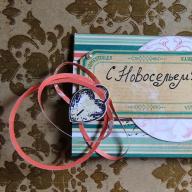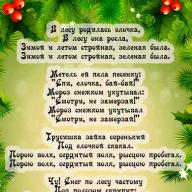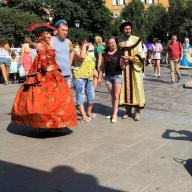National costumes of each nation bring understanding of its traditions and foundations. Each nationality has its own association. The clothes of a certain people create a unique image that is deposited in the memory of a person. At the same time, there are no “faded” outfits that do not have their own “zest”.
We offer a brief overview of the national costumes of several nationalities around the world.
Japan.
Kimono is the national costume of the land of the rising sun. The kimono became famous in the middle of the 19th century. A special feature of the kimono is that this outfit highlights the waist and shoulders. At the same time, all other figure flaws can be successfully hidden. Japanese beauty lies in the flatness and flatness of the figure, without any special "bulges". "Refined beauty of the body and pure soul" - this is how the Japanese say about those who deserve the right to wear this costume. Among other things, the kimono is the everyday garment for geisha. 
Kimonos are used to associating with only one type of clothing, however, in Ancient Japan, this word was used to refer to all clothing without exception.
Azerbaijan. 
The philosophy of the oriental dress of Azerbaijan is the richness of dressing. The clothes of this country had a rather simple cut. Women's attire consists of a national shirt and a skirt. A skirt worn over the top is a symbol of femininity. "Arkhalyg" - a vest made of dense material, worn over a shirt.  Also, the outfit could differ depending on the marital status of the woman. The outfits weren't limited to the same colors. The shades and colors of the outfit could also differ according to the age category of the woman. The woman's head was covered with a silk scarf.
Also, the outfit could differ depending on the marital status of the woman. The outfits weren't limited to the same colors. The shades and colors of the outfit could also differ according to the age category of the woman. The woman's head was covered with a silk scarf.
China.

Chinese clothing - hanfu, came in ancient times, and for a long time was the main outfit in this country. Hanfu has changed over the years. The first coming of Hanfu took place in the 1st century BC. The second was in the 14th century A.D. 
Also in the history of China, the word "Qipao" appears. This outfit was exclusively an imperial whim. Qipao resembles a long dress decorated with drawings. Since the 20th century, qipao has become the everyday clothing of Chinese women, and nowadays, the modernized qipao can be seen at fashion shows in China.
Scotland.
The kilt is one of the most interesting elements of Scotland's national costume.


Turkey.
The national costume of the Turkish people contains the same elements for both men and women.  This outfit contains a shirt, vest and harem pants. The men tucked their shirts into their trousers. The girls changed their outfits a little due to a long dress, dressed on top of everything else, which resembled a caftan. They also decorated their dress with a long belt (4 meters). On the trousers, they must have applied some intricate pattern.
This outfit contains a shirt, vest and harem pants. The men tucked their shirts into their trousers. The girls changed their outfits a little due to a long dress, dressed on top of everything else, which resembled a caftan. They also decorated their dress with a long belt (4 meters). On the trousers, they must have applied some intricate pattern.  Turkish women's clothing necessarily included silk, velvet and brocade.
Turkish women's clothing necessarily included silk, velvet and brocade.
Georgia.
The national clothes of this country are imbued with grace and elegance. The poor and rich Georgian estates united in similar features of the national dress. Only the material was different. Naturally, the wealthy classes used more expensive fabric. 
"Kartuli" - long fitted dresses, gave Georgian girls a special appeal and sophistication. The dress was decorated with beads and precious stones. The long skirt completely covered the woman's feet. The belt, made of silk, was decorated with pearls. 
Georgian men's costume is the image of a war-rider. Wide trousers, shirts and caftans are the main components of a Georgian man's clothing. Circassian (a type of swinging clothes) is an obligatory element of the costume. The Circassian coat was tightly tied with a belt with a metal set. Also in winter, felt cloaks, sheepskin coats and felt hats were common.
Holland.

The female Dutch costume stood out for its enhanced variegation and elegance. The shirts were decorated with patterns, and the top was worn with bright corsets of all kinds of colors. The corset was a very important element that has been passed down through the generations. Fluffy skirts and striped apron are a must-have item for a woman's costume. The boat-like headgear was usually white.
Spain.

Spain's women's outfits can seduce any man. The frankness of clothing is quite simply perceived by Spanish society. Wide skirts and sundresses were made from fabrics of all kinds of colors. The mantilla (lace cape) is an honorable element of the women's clothing of Spanish girls. Mantilla is often confused with a wedding veil, and these concepts have begun to unite these days. Many European brides use a mantilla instead of a veil. 
Folk costumes from around the world
Our world is inhabited by a huge number of peoples who have their own traditional costumes. We know about many of them, but we have never heard of others, for example, tribes. But, it is by their side that one can determine to which people certain people belong.
Take, for example, Georgia - there the traditional costume is chokha, in India it is, in China - qipao. From a suit, you can learn a lot about a person, his attitude to religion, financial condition and status.
Features of folk costumes
All folk costumes in the world have their own characteristics. For example, the Georgian national costume was formed in Tbilisi, the capital. The main feature of the Georgian people is the ability to dress exquisitely. Despite the position in society, the nation adhered to a single style, so it doesn't matter if a girl of a noble family or the daughter of an ordinary artisan - the costume had to be elegant and emphasize grace. The female costume consisted of a long, fitted dress with a flared skirt. The sleeves were usually up to the elbow, under which the original hand-embroidered armbands were worn. A fabric belt was tied at the waist of a woman, which was decorated with beads, embroidery, pearls and gold threads. Also, all women had to cover their heads.
Japan, the land of the rising sun, is also famous for its original sophisticated outfits. The traditional dress from the second half of the 19th century is the kimono. The kimono hides not only all the flaws in the figure, but also the advantages. The Japanese believe that the fewer the bulges, the more ideal and more beautiful the body constitution looks.
The Chinese folk costume is qipao. This outfit is distinguished by its grace, as it emphasizes feminine attractiveness and femininity. The dress has a fairly simple cut, but the peculiarity of the outfit is the presence of a stand-up collar. The edges of the dress are trimmed with a gold ribbon, and the main decoration is the presence of a traditional ornament.
As you can see, each nation has its own traditions that also apply to clothing. In the gallery below you can get acquainted with the outfits of different peoples of the world.
 |
 |
 |
National costume is an important part of the country, telling about its history, culture, traditions and way of life of local residents. We may know something superficial about this or that part of the world, but when it comes to unfamiliar countries, for example, about Japan, we immediately think of a kimono or a checkered kilt when it comes to Scotland.
In some countries, part of the national dress has become an anachronism: in Russia, you can see the costume only in a museum or at a performance by a folklore ensemble. And in India it is part of everyday life: women learn to wear saris from an early age.
In this article we will tell you about the most colorful and interesting national clothes.
National costumes of Japan
The kimono is sewn according to one pattern, not associated with someone's specific figure and its features. Only the length varies. The silhouette emphasizes only the waist and shoulders. Included with them are zori slippers, similar to modern flip flops on a small platform.
True, they are made of wood, which greatly deforms the foot in the future (they are still worn during rest or in summer when there is no rain).

In the thousands of street crowds in Tokyo, you can still find women dressed in kimonos. Although the Japanese have recently complained that the national costume is gradually fading into oblivion. But just because such clothes hinder movement, it will not work to rush in them.

If you are lucky enough to get to Japan, you will be amazed at how the people are devoted to the clothes of their country.
Even after World War II and the American occupation, there was an inexplicable revival of the national costume.

National dress in Scotland
This is the first country with which we associate the phrase "national costume". The Scottish cage (tartan) is not just a cage. The width of the intersecting stripes and their color will tell about a certain clan inhabiting a particular area. This tradition is important to the Scottish people.
Men's kilts and women's skirts are made of tartan of a certain color, corresponding to their clan.

Nowadays, in Scotland, you rarely meet someone in a national costume, it is often a matter of special occasions: national holidays, festivals, weddings, football matches, meetings of the Scottish diaspora in other countries, and so on.

National costumes of Bhutan
Bhutan is the only country in the world where the local population is required to wear national clothes. National Dress Code (Driglam Namja) are worn by everyone, without it they will not be allowed into any state institution or some other decent place, this is a violation of public etiquette. Of course, this does not apply to tourists.

The national costume is a belted robe - gho. In addition, a special scarf is worn. For commoners it is white, for the king it is yellow. Someone takes off the top of the robe when it's hot outside, or when trousers or jerseys are pulled on when it's cold. In general, local residents are satisfied with this.
After all, in Bhutan, instead of GDP, there is a happiness index.

Clothing in India
It is a multinational country. After all, 447 languages and 2000 thousand dialects are spoken here. Therefore, the national costume and its features differ depending on the state. Even the influence of the European mass market, its cheapness and practicality could not reduce the popularity of the sari, patiala, dhoti and shervani.

A sari is a wide strip of fabric (usually 5-10 meters) which is draped around the woman's body in a special way. As a rule, the fabric is wrapped several times around the waist, and the remaining "tail" is thrown over the shoulder, exposing the belly.
For tourists, special detailed schemes are sold on how to properly "roll up a sari." True, you don't look like a foreign woman in such a suit, it is only suitable for photo shoots.
Indian girls learn the art of graceful wearing of this national pride from the age of 10-12.

Salwar kameez is another popular dress among Indian women. Fashion for it originated in Afghanistan and eventually migrated to India. This beautiful, practical outfit is still popular today, simplifying its look a little. Salwar - silk trousers, kameez - tunic reaching mid-thigh.

Working-class men wear the dhoti, an elaborately draped loincloth. The richer gentlemen prefer shervani (a long, embroidered coat) in combination with trousers and a turban (this headdress is especially popular among those who practice Sikhism).

What they wear in Peru
It is the poncho that is the basis of the national costume of the Peruvians. It is comfortable and simple, keeps the body warm for a long time. Made from alpaca yarn. These clothes are very light, warm and amazingly wearable. The pattern on the poncho is not just a decoration, but a special sign., which will tell you which village or community the Peruvian belongs to. The edges of the poncho are decorated with fringes. It was from Peru that the poncho migrated to American and European mass-market stores, although such a factory item has greatly lost its functionality.
The female image is unthinkable without a funny hat with concave brim - liklia.

Bolivian national costumes
More than half of the population of this South American country wear national clothes. The revival of the traditional costume was initiated by the current president, Evo Morales. By origin, he is an Aymara Indian.

Mandatory elements of the Aymara women's costume are a multi-layer skirt, a white blouse, a massive shawl and a bowler hat (similar to those worn by English gentlemen of the beginning of the last century). Despite the apparent simplicity, the cost of one set can reach several thousand dollars.

The story of how a bowler hat became a must-have of a woman's image deserves a whole book. But in short, at the beginning of the 20s of the last century, an enterprising merchant brought a large batch of men's bowlers. But the product was not in market demand. In order to somehow get rid of the party at least to zero, the businessman instilled in local women that hats bring fertility. Such advertising became effective, since then the hat has become the basis of the costume. The image is complemented by jewelry made of gold and silver, massive beaded brooches and earrings.
If you want to get acquainted with the culture and life of a certain people, then you should start by analyzing its national costume. Here, every detail is full of symbolism - color reflects people's emotions, prints - nature and everyday life that surround them, accessories - show the vision of beauty. So which outfits are the most interesting? Let's start!
1. India... The traditional attire of Indian women is a sari. In appearance it resembles a long dress with sleeves descending on one arm, but when unfolded it is just a rectangular piece of fabric, the length of which is 5-10 meters. For decoration, embroidery from sequins and gold threads is used. A sari is worn with a special blouse called a choli.

2. Korea... Korean women wear hanboki suits, which consist of a light-colored jacket (chogori) and a long skirt (chima) that can be quilted, single-layered, or double-layered. An obligatory element of the hanbok is the collar strap, which is attached to the bottom of the jacket. Silk shoes with embroidered floral designs complete the look.

3. Japan. Women in Japan have long wore long robes with wide sleeves, which are called "kimonos" in everyday life. To emphasize the figure, a wide obi belt is used, which is wrapped several times around the waist. By the way, the traditional kimono consists of 12 parts and in order to put it on you have to resort to the help of other people.

4. Indonesia. The classic Indonesian costume consists of a women's shirt (badji) worn over a special skirt with folds in the front (kain or sarung). Cain is sewn from ordinary cotton fabric, embroidered with silk threads.

5. Norway. Traditional Norwegian peasant costumes are called bunad. The design of the costume is quite complex, complemented by a variety of pewter decorations and embroidery. The female bunad consists of an embroidered skirt, shirt, vest and stockings. The pattern and color of the embroidery changes depending on the region of residence.

6. Kazakhstan. The outfit of Kazakh women consisted of the following components: upper shoulder clothing (reminiscent of a camisole or dressing gown) and wide trousers. In the 18th century, red and blue colors predominated, but over time, dresses began to be sewn from fabrics of other shades. An indispensable attribute was a special bib that covered the girl's naked body. It was embroidered with ribbons and beads.

7. Peru. The most common outfit is considered to be a poncho decorated with a geometric pattern and a wide flared skirt that reaches mid-calf. A “fitter” is used as a headdress - a hat that is attached to the back of the head with an elastic band.

8. Tajikistan. Differs in bright colors and an abundance of interesting patterns. Women wore dresses of a tunic-like cut, in the countryside they were made of smooth fabric, in the mountainous regions they were embroidered with silk. Wide trousers with slouching at the ankle were worn under the dress. The head was covered with a skullcap or scarf.


9. Ukraine. The most memorable feature of the Ukrainian folk costume is the embroidery that adorns the shirt, vest, hem of the skirt and belt. By the pattern of the shirt, you can even determine where it comes from (in each region there is a certain combination of colors) and what kind of meaning was put into the pattern. Coral beads and handmade wreaths were used as accessories for the Ukrainian dress. At present, Ukrainian embroidery is very popular among people of all ages and is even worn to work.

From time immemorial, long before the discovery of America by Columbus, numerous tribes of an amazing and mysterious people, very strong and hardy, lived on this land in harmony with nature. In North America alone, there were about 400 different tribes. Some of them were hunters, others were warriors, and others were engaged in cattle breeding and agriculture ... Accordingly, their lifestyle, traditions, culture were different for all of them. Each tribe had its own, distinct from the others, traditional style of dress, although they had much in common in dress.

MEN'S CLOTHING
Men of many tribes often walked with an uncovered torso and wore only loincloths (esh), sewn from leather.


As for the inhabitants of the plains, the eastern and northern regions, they wore much more clothing.

Traditionally, clothes were made from the skins of deer, antelopes, bison and other animals, and decorated with porcupine feathers or quills. Later they began to use beads in large quantities. The Indians knew how to make very soft and durable leather from the skins, from which they later sewed clothes, shoes and much more. At the same time, each tribe kept their secrets for dressing skins.
Of course, the clothing of the Indians varied depending on the weather and destination.
In the summer they wore shirts made of deerskin, while two separate cloth trousers, called leggins, were attached to the belt.

They also had sheep wool ponchos and woolen blankets.

For hunting, they wore the simplest and most comfortable clothes, but for ceremonies and rituals, as well as when choosing a bride for themselves, they tried to dress so as to look rich and beautiful.
How elegant a warrior's clothes would be was entirely dependent on his merits on the battlefield. The shirt and leggins were decorated with embroidered ornaments using porcupine needles or beads, as well as fringes from either strips of leather or ermine skins.

In cold weather, there was nothing warmer and stronger than a cape or cloak made of bison hide.


If it was a whole skin, then it was thrown in such a way that the tail was on the right hand.

In the 19th century, under the influence of white people, the Indians greatly changed their traditional style of clothing - they began to sew their outfits from velvet, silk, using satin ribbons, and also began to wear with pleasure the clothes that they saw on Europeans, they especially liked hats. vests, uniforms, scarves, shawls ...

WOMEN'S CLOTHING
Women usually wore a long skirt with a shirt, robe, or tunic, or a long dress with or without a petticoat.



Typical women's clothing was a sleeveless cube dress made of two elk skins with slits for the arms.




In cold weather, a cape was used for warmth.


All women were skilled craftsmen, they sewed all the clothes for themselves, and for men, and for children. For work, they used homemade improvised machines. Ready-made clothes were decorated with drawings, various objects - bells, coins, shells, animal teeth, as well as embroidery and fringes. Feathers were held in high esteem. The passion for jewelry among the Indians is in the blood, and in addition to decorated clothes, both men and women loved to wear a wide variety of necklaces, rings, bracelets - both on their hands and feet.

INDIAN SHOES
For the Indians of North America, there is no better shoe than moccasins, we can say that this is their national treasure.

Moccasins are also sewn from animal skins, and very often they are decorated with drawings, embroidery, feathers, and beads. They can be taller, lower, or with soft or hard soles - depending on what they are to be used for.

For cold weather, moccasins are sewn with fur inside.
Moccasins are often paired with leggings, especially if they are going hunting. The leggings are reminiscent of the familiar leggings, they are also pulled over the ankles.

Hairstyles
All Indians, both men and women, wore long hair, which was usually tied with a strap or bandage.



And the most common hairstyles were braids.



The same feathers were often used to decorate the hairstyle ...


HATS
Each tribe had its own sacred animal, the tribes often called themselves that - the tribe of the wolf, crow, bear ... Often the Indians also wore the corresponding headdresses.


The Indians attached great importance to their headdresses; eagle feathers were most often used to decorate them.

Warrior hairstyles
1.Warbonnet Headwear

Warbonnet is a very beautiful and well-known headdress made of several rows of feathers. It could only be owned by men - leaders and warriors.


At one time it was invented by the Indians of the eastern forest regions. The feathers for the warbonnets were chosen very carefully - in size and color. Basically, they preferred to use very beautiful feathers from the tails or wings of young golden eagles.

It took several months to make one piece.

It took a lot of feathers, there was even such a profession in the tribes - "Eagles Catcher".

2 Roach Headwear
Although Warbonnet was very beautiful and popular, it was not very practical - it was inconvenient to fight in it. Much more comfortable was a headdress called Roach. It was a bundle or a comb of hard porcupine quills or hard hair of a deer, elk, or horse fixed on the head. The needles and hair used were often dyed brightly and of course decorated. Usually feathers.




